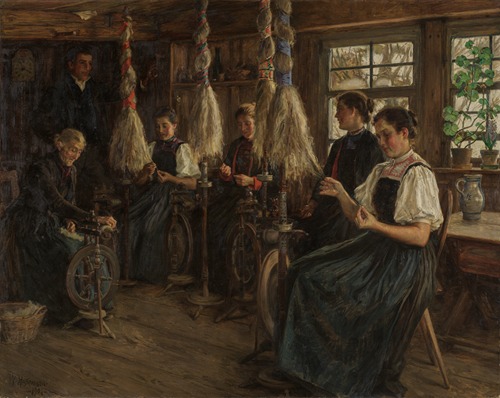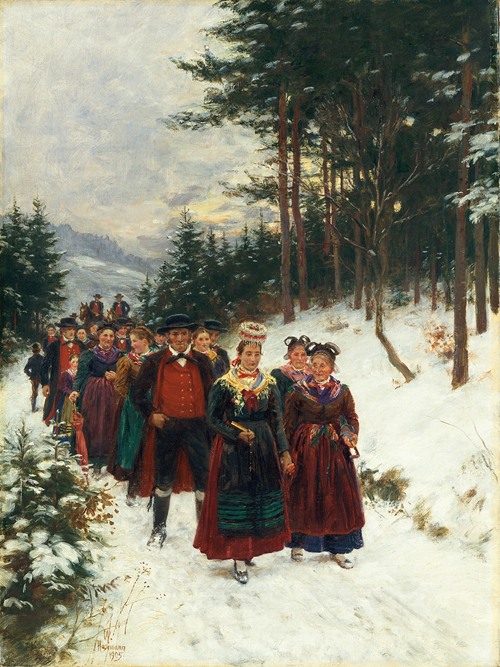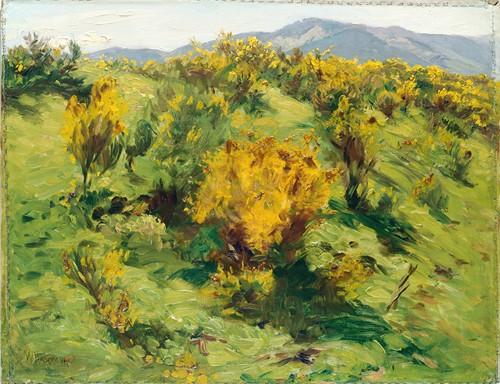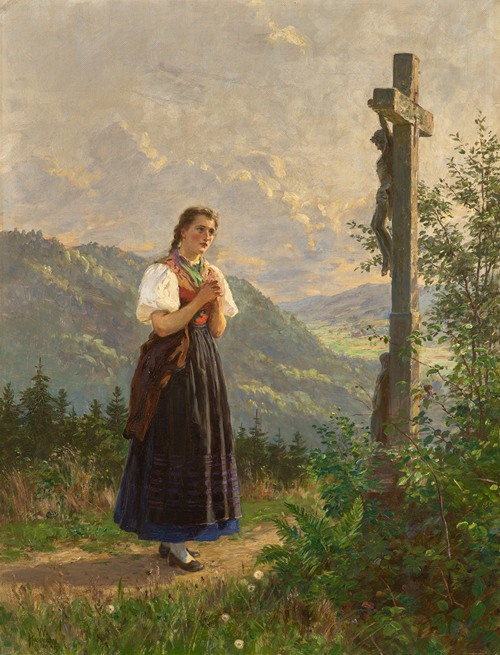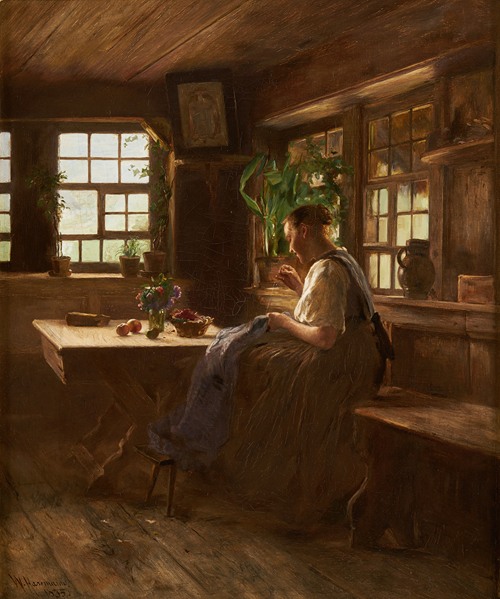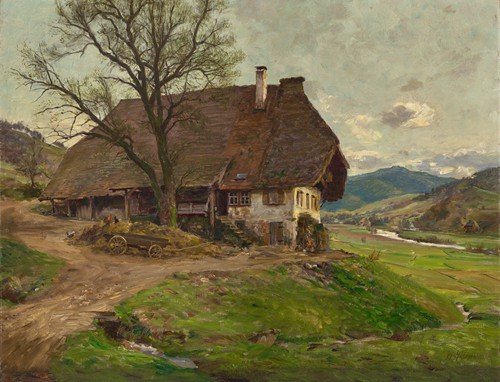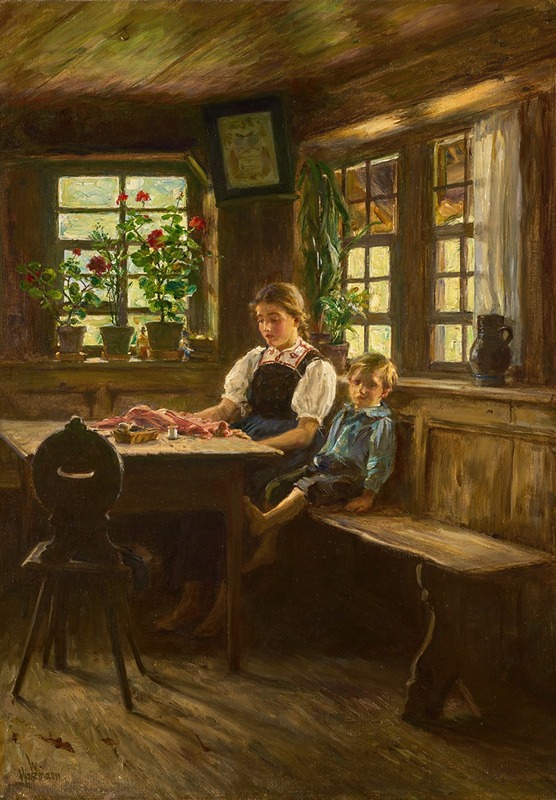
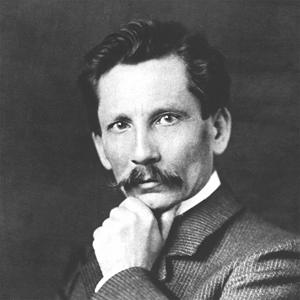
Wilhelm Hasemann was a German genre painter and illustrator.
Hasemann was the only son of a mechanic and left school at the age of fifteen to work in his father's shop. After displaying some artistic talent, he went to study at the Prussian Academy of Arts, the Weimar Saxon-Grand Ducal Art School and the Academy of Fine Arts, Karlsruhe where he was a student of Gustav Schönleber. In 1880, he visited the village of Gutach for the first time as part of an assignment to illustrate the novella "Lorle, die Frau Professorin" by Berthold Auerbach. Later, he and his brother-in-law Curt Liebich would establish an artists' colony at Gutach. In 1898, he was named a Professor by Frederick I, Grand Duke of Baden.
Hasemenn's paintings focused on rural life, customs and traditional dress, and his works were widely reproduced as postcards and magazine illustrations. He often collaborated with the writer Heinrich Hansjakob, who lived nearby in Haslach. They shared an interest in preserving the culture of the Black Forest region.
The primary and secondary schools in Gutach are named after him, as well as the art museum and the game preserve between Hausach and Schonach. In addition, the mountain hut on the Farrenkopf on the Westweg between Hausach and Schonach bears his name.

